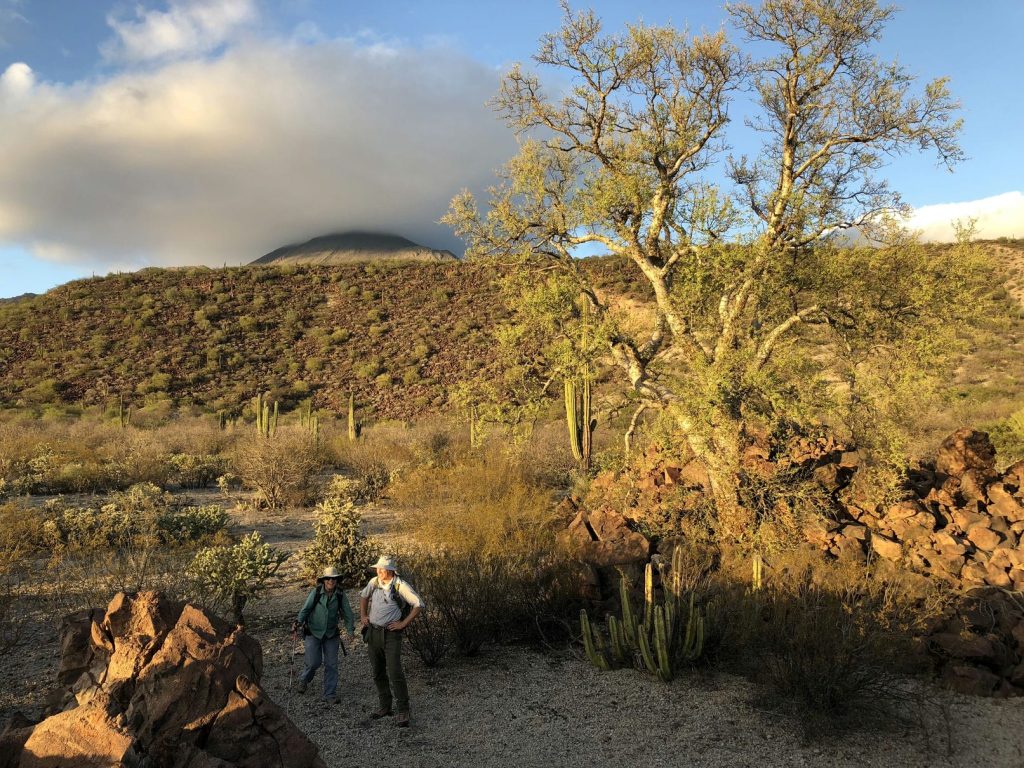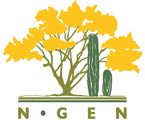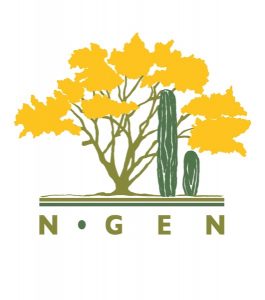
Title: 4-D Geologic Evolution of the Gulf of California
Convener: Scott Bennett
Participants: Will update soon.
Discussion
In this session, discussion will focus on the current state of binational research pertaining to the 4-D geologic evolution of the Gulf of California (in both time (1- D) and space (3-D)) and how this evolution has created the modern geological setting of the Gulf of California.
The session began with an introduction to the geologic evolution of the last 25 million years of the Gulf of California region, shown via paleogeographic maps and an animated tectonic reconstruction.
Pre-12.5 Ma (million years ago)
– subduction zone offshore western Mexico – chain of volcanoes (Comundu arc) along axis of future Gulf of California – widespread volcanic eruptions and deposition of andesite lava flows and volcanic-rich sedimentary rocks along the peninsula’s eastern margin
12.5 – 6 Ma
– at 12.5 Ma, the plate boundary along Baja CA evolves from subduction (compression) to transtension (both extension and right-lateral relative motion)
– plate boundary between the Pacific and North American (PAC-NAM) tectonic plates during the proto-Gulf period (12.5 – 6 Ma) was characterized distributed across a wider region, known as the Gulf Extensional Province
6 – 0 Ma
– PAC-NAM plate boundary during modern-Gulf period (6 -0 Ma) was characterized by more localized faulting
– large marine basins open up and are formed during this period throughout the Gulf
0 Ma (Present-day)
– present-day PAC-NAM plate boundary is located along the center and western portion of the Gulf of California and is directly connected to the San Andreas fault system in southern California
– consists of multiple, discontinuous, right-lateral, strike-slip faults that connect extensional basins (pull-apart basins) that are bound by normal faults
– recent large earthquakes (e.g. El Mayor-Cucupah, Ballenas channel) are evidence of active faulting along PAC-NAM plate boundary
TIMING AND LOCATION OF MARINE SEAWAYS
The group discussed the evidence for marine seaways in the Gulf of California and the role these may have played in the diversity, distribution, and speciation of marine and terrestrial organisms.
The discussion focused largely on trans-peninsular seaways that are hypothesized to have existed across the Baja California peninsula at the latitudes of San Ignacio/Santa Rosalia (~9-12 Ma and ~1.5 Ma) and La Paz (pre-3 Ma). These seaways would have created physical boundaries for many terrestrial species, and allowed dispersal between the Pacific and Gulf for marine taxa until seaway closure. The group discussed the evidence from numerous terrestrial species showing a genetic break between northern and southern populations in the center of the peninsula. Mitochondrial DNA and allozyme data suggest these breaks occurred ~1-2 Ma. Biologists frequently call upon trans-peninsular seaways to explain these patterns. Topographically, only a few low-elevation locations along the drainage divide permit a trans-peninsular seaway (e.g. San Ignacio/Santa Rosalia and La Paz). Discontinuous outcrops or marine rocks provide clues of former trans-peninsular seaways. Understanding the geological source of these genetic discordances will enable scientists to unify the geological and biological histories and explain how the geological landscape has controlled the evolution of the Baja Californian and Gulf biota. Obtaining timing information about these biologic or geologic events is critical to linking these occurrences.
For studying younger patterns (Pleistocene, 1.8 – 0.01 Ma) within these species, the group debated the role of more rapid climate oscillations, such as global glacial-interglacial cycles. Such radical climate shifts would likely generate a patchwork of glacial refugia (reduced suitable habitat during ice ages) and post- glacial range expansion, which hold their own genetic signatures. Of particular interest to those working on islands is the bathymetry within the Gulf and its effect on island size and connectivity during glacial sea-level lowstands. Lowering sea level by the estimated 120 m greatly expands most islands and lowers the water dispersal barrier for their inhabitants.
Adrian Munguia Vega shared some unpublished results from his dissertation “Habitat Fragmentation in Small Vertebrates from the Sonoran Desert in Baja California”. Adrian showed a map depicting the location and abundance of genetic fragmentations (breaks) that he documented along the Baja California peninsula.
Seminal papers that first observed these biotic breaks and population gradients were pointed out:
Howard Scott Gentry (1949): “Land plants collected by the Velero III, Allan Hancock Pacific Expeditions 1937-1941”
Guaymas Loreto ‘biotherms’
Forest Shreve (1951): “Vegetation of the Sonoran Desert”
Tom Bowen mentioned unpublished research that observed Quaternary-age marine embayments along coastal Sonora that swept inland as far as 8-10 miles.
IMPACT OF MARINE GEOPHYSICAL RESEARCH ON MARINE MAMMALS
Scott brought up the need for future marine-based geological/geophysical research in the Gulf of California to answer some key geologic questions. The marine sedimentary basins of the northern Gulf (e.g. Upper Tiburon, Upper Delfin, Consag, Wagner) preserve continuous records of climate and timing of basin formation. However, these geological records are relatively understudied. Common geophysical techniques that could be used for future research include (1) scientific drilling for rock and fossil collection and (2) seismic reflection that utilizes a controlled seismic source of energy. Scott asked the biologists in the group to share their knowledge of the impact such research might have on marine mammal populations (e.g. whales, dolphins). Noise from shipping and navy activities is well known to affect cetaceans. One suggestion was to avoid breeding seasons known from long-term monitoring of marine mammals, such as work by Hector Perez (Prescott College Kino Bay Station). Following the session, discussion with Hector Perez highlighted that many incidents of marine mammal deaths are difficult to directly link to human-derived sound, because the results of these sounds may take days or weeks to be detrimental and possibly lead to death. Further research is needed to better understand the role of human-derived sound on marine mammal deaths. The ‘safe distance’ from a noise source is also not well understood.
WHERE CAN GULF OF CALIFORNIA CLIMATE RECORDS BE FOUND? The group discussed the potential geological and biological sources of climate data in the Gulf of California. The list included:
- pack rat middens (back to ~43 ka)
- marine sedimentary records in the Gulf and southern California (faunal assemblages provide a constant climate record)
- lake sedimentary records glacial periods observed in the Sierra Nevada


